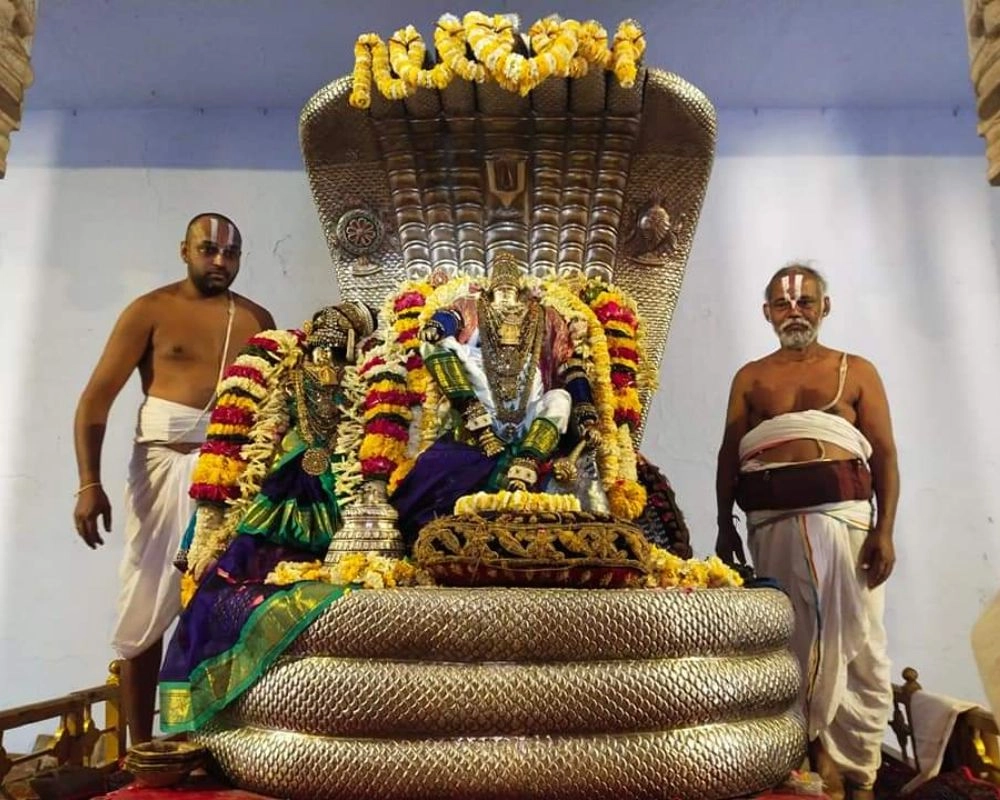Prem Mandir
Nestled in the sacred town of Vrindavan, Uttar Pradesh, Prem Mandir (Temple of Love) stands as a maj...

Nestled amidst the sacred ghats and temples of Vrindavan, the Sri Ranganath (Rangji) Temple stands as a unique and grand tribute to Lord Vishnu, showcasing a perfect blend of North and South Indian temple architecture. Known locally as the Rangji Mandir, this temple is not only one of the largest temples in Vrindavan but also one of the most visually distinctive.
Constructed in 1851 AD, the Sri Ranganath Temple was commissioned by Sri Rangadeshik Swami Ji, a South Indian Vaishnava saint, under the patronage of Seth Radha Krishna and Seth Govind Das, wealthy merchants from Chennai (Madras). The temple was built in honor of Lord Ranganatha, a reclining form of Lord Vishnu, and reflects strong Dravidian architectural influence, making it stand out from other temples in the Braj region.
The Rangji Mandir is a harmonious blend of Dravidian (South Indian), Rajasthani, and Mughal styles of architecture. The temple complex is spread over a vast area with massive walls and ornate gates.
Gopuram (Entrance Tower): The temple features a towering Rajagopuram at the entrance — a typical feature of South Indian temples, adorned with intricately carved sculptures of deities and mythological figures.
Gold-Plated Garuda Stambha: A stunning pillar of Garuda, plated in gold, stands in front of the sanctum, symbolizing the mount of Lord Vishnu.
Sanctum Sanctorum: Inside, you’ll find the idol of Lord Ranganath Ji (a reclining Vishnu) along with Goddess Lakshmi and other Vaishnava deities.
Mandapams and Pillars: The temple features beautifully carved stone pillars and a large prayer hall (mandapam) with South Indian-style detailing.
Water Tank (Pushkarni): A sacred tank used for temple rituals enhances the temple’s spiritual and aesthetic value.
The presiding deity is Lord Ranganatha, depicted in a reclining posture on the sacred serpent Adisesha, a rare form not commonly seen in North India. The temple also houses idols of Goddess Lakshmi, Ramanujacharya, and Lord Krishna, representing different aspects of Vaishnavism.
Rituals are performed in strict accordance with South Indian Vaishnava traditions, and the priests are from Tamil Nadu, maintaining the authenticity of the temple's customs.
The temple is well-known for its Rath Yatra and Brahmotsavam, celebrated annually with great pomp:
Brahmotsavam: Held in March–April, it includes various rituals, cultural programs, and the famous car festival (rath yatra) where the deity is taken around the temple on a richly decorated chariot.
Vaikuntha Ekadashi and Ramanuja Jayanti are also celebrated with enthusiasm, drawing large crowds.
While Vrindavan is primarily associated with Lord Krishna and Radha, the presence of Sri Ranganath Temple adds a spiritual dimension by honoring Lord Vishnu in his cosmic form. It symbolizes the unity of Vaishnavite traditions across regions—from Tamil Nadu’s Srirangam to the Braj Bhumi of Uttar Pradesh.
Location: Goda Vihar, Vrindavan, Mathura district, Uttar Pradesh
Timings: 6:00 AM to 11:00 AM and 4:00 PM to 9:00 PM
Entry Fee: Free
Best Time to Visit: During Brahmotsavam (March-April) or winter season for a comfortable experience
Nestled in the sacred town of Vrindavan, Uttar Pradesh, Prem Mandir (Temple of Love) stands as a maj...
Nestled in the narrow, vibrant lanes of Vrindavan, Uttar Pradesh, the Banke Bihari Temple is one of ...
Rising in the heartland of Lord Krishna’s birthplace, Vrindavan Chandrodaya Temple is not just a tem...
The ISKCON Temple, often recognized by its beautiful domes, serene atmosphere, and the enchanting ch...
